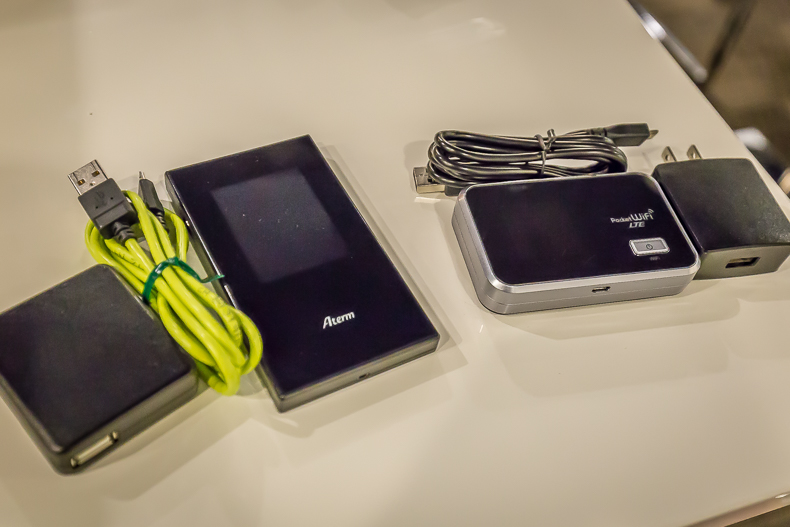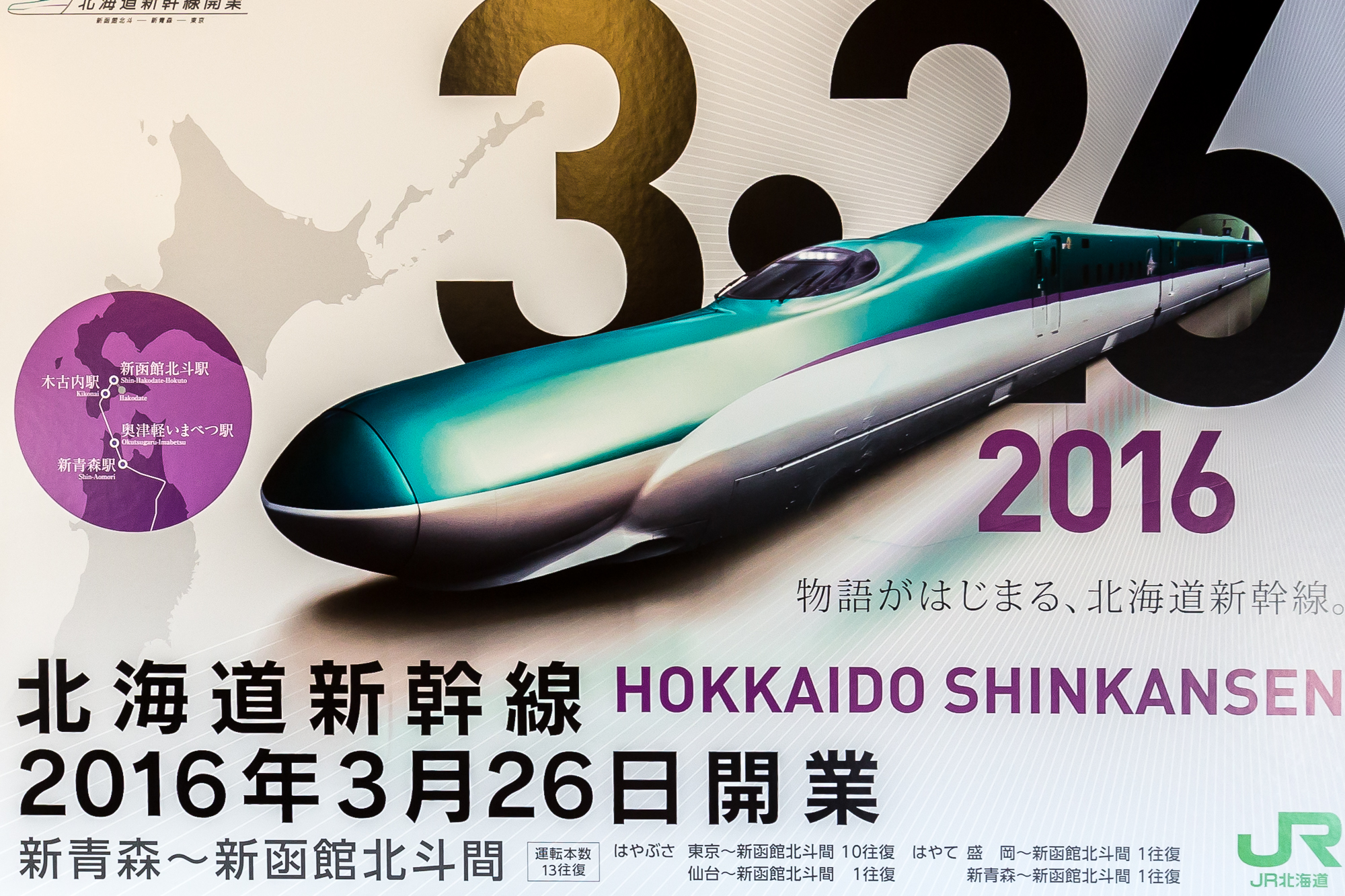Internet for Travelers: In-depth Review of RentalWifi
Share

Usually when I travel Japan, I rely on hotel WiFi, or seek out internet cafes to get online. After years of traveling like this, it became clear that I was wasting a lot of time… hotel WiFi was often slow, finding and then using an internet cafe ate up precious hours of travel time.
For my most recent trip, I tried out RentalWifi. For this review I used both their Standard Wifi (Y!mobile) and Premium Wifi (Docomo),for 30 days traveling all over Japan - from Nagasaki and the remote Yakushima in southern Japan, to Sendai in northern Japan.
Step 1: Choose a portable internet device (standard or premium)
Both the standard and premium devices have very fast internet access speeds, more than enough for a traveler. Besides cost, there are two main differences:
- Speed - premium is rated at 150Mbps and standard is rated at 75Mbps. Anything above 25Mbps is very fast.
- Coverage - the premium devices use Docomo, Japan’s biggest mobile operator, and covers more of the population than the standard device.
When choosing a device on the RentalWifi website, I strongly recommend the ¥500 insurance.
Step 2: Book (choose dates, enter hotel details, pay via PayPal)
Before booking, you will need to know the details of a hotel you will be staying at, as RentalWifi delivers the device to hotels.
There is a minimum rental period of 4 days.
Once you’ve gone through the order process, pay for your order. Once complete, you’ll receive an email confirmation of your order.
Step 3: Collect your device
A few days before your delivery date, the device is dispatched to your hotel. An automated email is sent, allowing you to track delivery and also gives details on what is actually being sent to you.
The device will be addressed to you, care of the hotel. Go to your hotel reception to collect your device. If the staff don’t speak English, or you’re just like me and prefer to speak Japanese in Japan, use the phrase below.
“私に荷物がきてますか?”
Watashi ni nimotsu ga kitemasuka?
Has a parcel arrived for me?
Step 4: Use the device
Your package will contain:
- A small pouch with the internet device, power adaptor and cable.
- A prepaid envelope for returning the device (be sure to keep this somewhere safe, you’ll need it to return the device once the rental period has finished).
Canon EOS 6D (35mm, f/5, 1/50 sec, ISO3200)
Rental WiFi internet device delivered to our hotel in Namba, Osaka, Japan
The cable which attaches to the power adaptor is a USB type interface, which is very handy as you can plug it into other power sources.

Canon EOS 6D (35mm, f/5, 1/50 sec, ISO3200)
Two rental portable internet devices in Japan, with power chargers and cables.
The devices are very light weight and quite small. As you can see in the photo below, they are much smaller than the average smartphone.
The WiFi network name and password were attached to the back of each device. The first time I connected with both a phone and laptop (MacBook Pro), the password needed to be entered, from then on it connects automatically.
I would charge up the device (along with my phone) overnight and put it in my day-backpack when heading out in the morning. Then whenever I first need to use the internet for the day, simply start up the device. I’d usually just leave it switched on, sitting somewhere in my backpack, all day. If you’re going to be out for more than about 8 hours, consider switching off the device to save battery, just to be sure you have enough power.
During the 30 days of using the devices, I never had any connection issues (between my phone/laptop and the device) and speed was always very fast.
Canon EOS 6D (16mm, f/8, 1/40 sec, ISO5000)
Two rental internet devices on a bullet train (shinkansen) in Japan.
My travel partner was using the standard device. As he is a snorer, we always had separate hotel rooms. As we were both running Android, we used the Hangouts app for texting and calling each other, using data from the portable internet device. Another cool feature using the Hangouts app is the ability to send a map location… as I’m an early riser, often up for sunrise photography, when my travel mate was ready to leave the hotel, I’d just send him my map location and we quickly found each other.
As someone who has no sense of direction, having internet access at hand saved me from many cold mornings and nights wandering the streets! Also made for great peace of mind, especially when needing to arrive on time for tours, ferry connections, restaurant bookings, etc.
Many shinkansen have power points at the end of seat rows, and at the front and back of each carriage. Use your train transit time to top up the battery charge of your device.
Step 5: Return the device
Returning the device is just as convenient as collecting it. Simply put the device, pouch, cable and adaptor in the return envelope. You can ask your hotel reception to post it, or place it in any post box.
We kept our devices all the way to the airport. Kansai International Airport (Osaka) has multiple post boxes, as do just about all other airports in Japan. So before check-in, we dropped our devices in the post, just hours before leaving the country. Airport post box locations can be found on the respective airport website.
Tips for traveling with a portable internet device
- Reserve your battery power and turn off the devices when on the bullet train. Shinkansen are constantly going in and out of tunnels, so wireless internet service is patchy.
- Turn off WiFi on your smartphone or tablet when not using the internet. More often than not, my smartphone ran out of battery before the internet device did.
- If you find yourself running out of power, buy a cheap portable USB power pack from an electronic store like Bic Camera.
- If you have lots of devices which need charging, consider buying a power board with USB ports. I bought one from Bic Camera, which allowed charging of the WiFi device, my laptop, 2 camera batteries and mobile phone all at the same time. Super convenient in hotels, where power points can be limited.
- If using this with your mobile phone, remove the SIM card from your phone to ensure it doesn’t switch to roaming (which can be very expensive). I store my SIM in an SD card holder.
While it’s amazingly convenient having readily available internet, don’t let it get in the way of interacting with others while traveling Japan. Some of my most memorable travel experiences came from asking Japanese people for directions and restaurant recommendations, and talking to other tourists about locations.
Also don’t let it distract you from taking in your surroundings.
Verdict
After years of traveling Japan and relying on internet cafes, I’m sold. For all future trips I’ll be renting a portable internet device.
Being a travel writer and photographer, I was able to quickly publish photos from my camera, via my phone, to Facebook and Twitter. It also helped make the most of any down time, waiting for a train, for meals to be served, long bus rides.
RentalWifi were a pleasure to deal with, the prices are great and the website very easy to order from.

